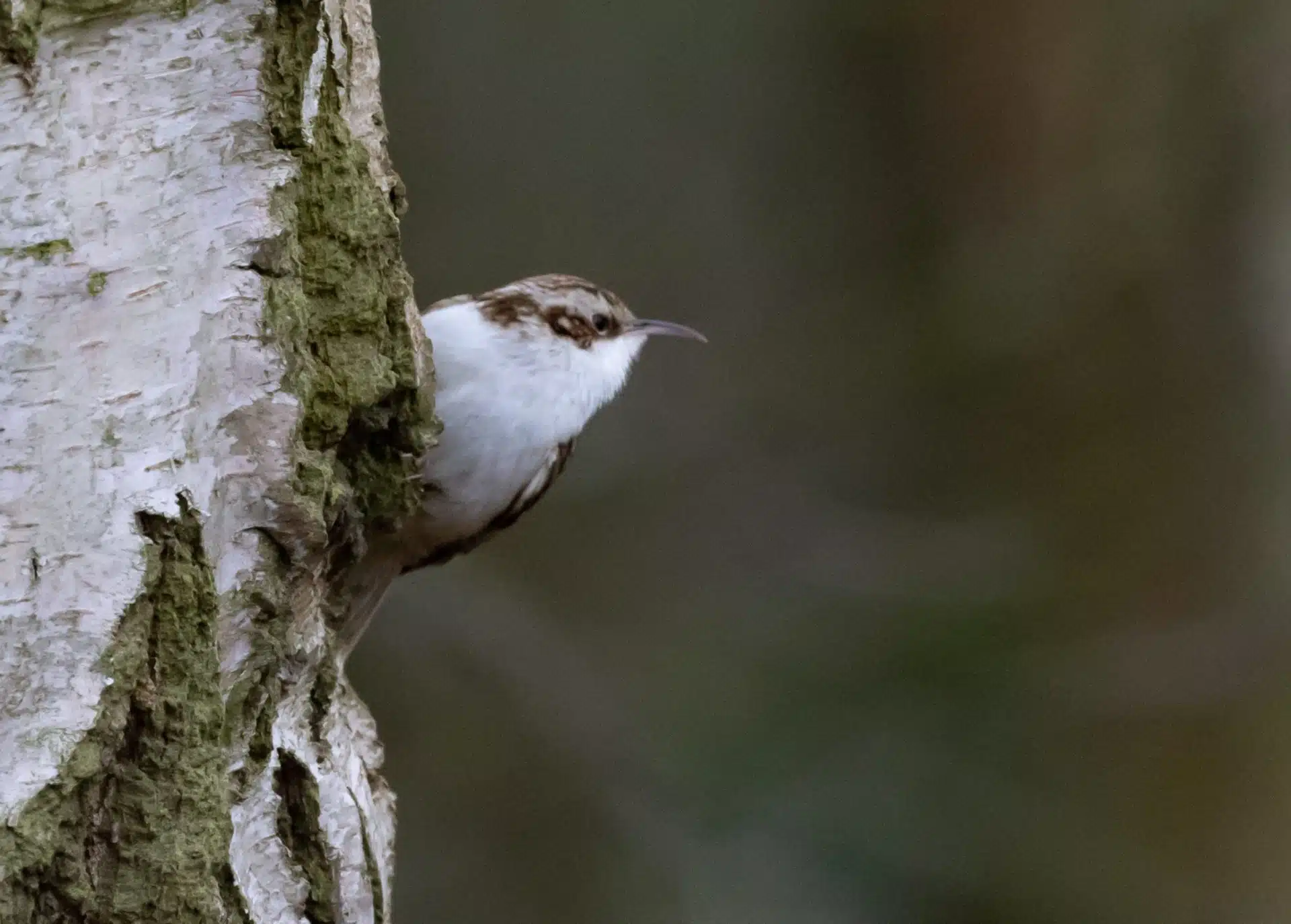Nature Profile
Birds
Brown Creeper
Certhia americana

Voice: very high pitched see-see-titi-see or see see
This small, well-camouflaged bird of woodlands has a unique foraging technique. Adapted for "creeping" on tree trunks and large branches the Brown Creeper use their stiff tails against the bark for both support and balance in search of food. Typically when searching for food Brown Creepers move upwards from the bottom of a tree trunk to the top. Once they reach the top they then fly down to the bottom of another tree moving up to start foraging again. While on the tree Brown Creepers creep slowly with their body flattened against the bark, probing with their downward curved beak for invertebrates such as insects, spiders, their eggs, and pupae that they find hidden in bark crevices.
Brown Creepers prefer large trees (dead or alive) in mature mixed or deciduous forest for foraging and nesting. They especially like wet areas near riparian corridors with dead trees. They escape predators by staying motionless for several minutes often with outspread wings. Their brown plumage camouflages into the tree where they can seem nearly invisible.
Brown Creepers generally begin breeding in April, with breeding season peaking in May, June and July. Nests are built by females. Occasionally nests are built in cavities, but for the most part they are tucked into crevices in tree trunks where the bark has separated from the trunk. Nests are constructed with twigs and bark strips lined with feathers, hair and cocoons. The female lays 3 to 7 eggs. They young birds fledge after 15 to 17 days, but continue to be fed by the parents for at least two weeks.
Brown Creepers can be seen in Ohio all year long. While generally solitary birds, during the winter Brown Creepers may tag along with other birds including Kinglets, Nuthatches, Chickadees and Woodpeckers. Like many birds during the winter Brown Creepers change their diet to eat seeds and other vegetable matter. They will on occasion come to suet feeders. Brown Creepers are widespread and generally abundant, but habitat loss and degradation is considered a threat to the species in some states, including Kentucky, Illinois, Indiana, Ohio, New Jersey, New York, Idaho, and Montana.
Want to help the Brown Creeper? Create a bird friendly habitat. Leave dead or decaying trees in your yard. Plant trees such as Honey Locust (Gleditsia triacanthos), Shagbark Hickory (Carya ovata), Sycamore (Platanus occidentalis), Silver Maple (Acer saccharinum), Yellow Birch (Betula alleghaniensis), Eastern Hemlock (Tsuga canadensis), Eastern White Pine (Pinus strobus), and Northern White Cedars (arborvitae, Thuja occidentalis). Shrubs such as American (Corylus americana, High-bush Cranberry (Viburnum trilobum), Silky (Cornus amomum) or Red-Osier (Cornus sericea) Dogwood will help protect this bird while it is feeding.
Best Location to View: Helen Layer Rhododendron Garden, Woodland Trail
Color: Brown
Range: Mexico, North America
Size: Small




